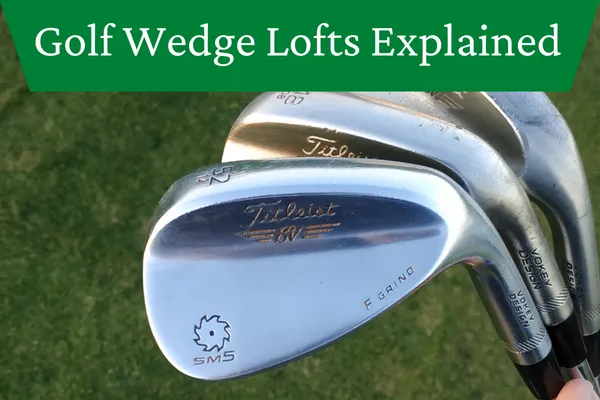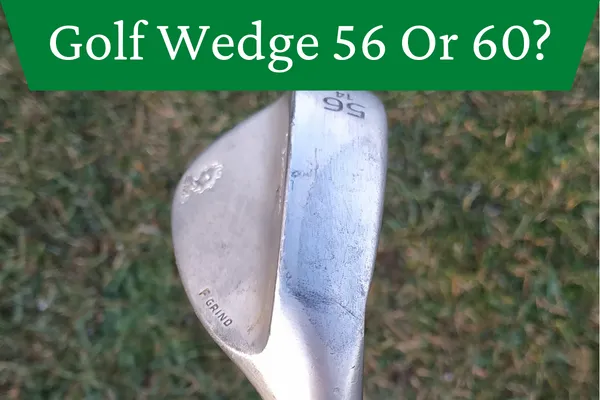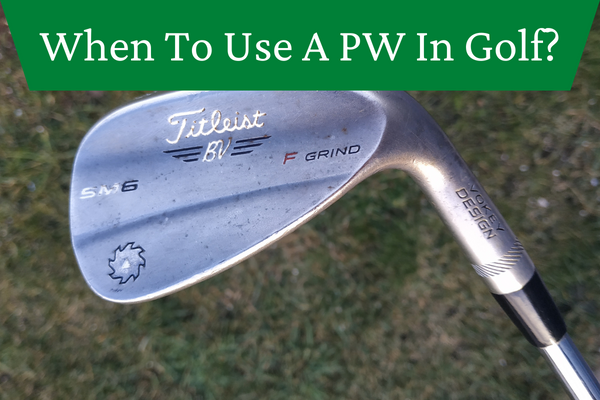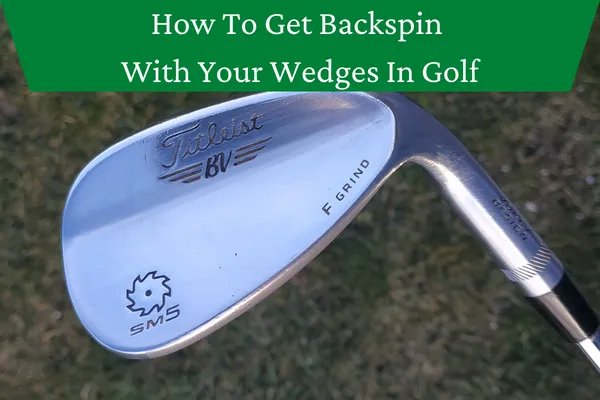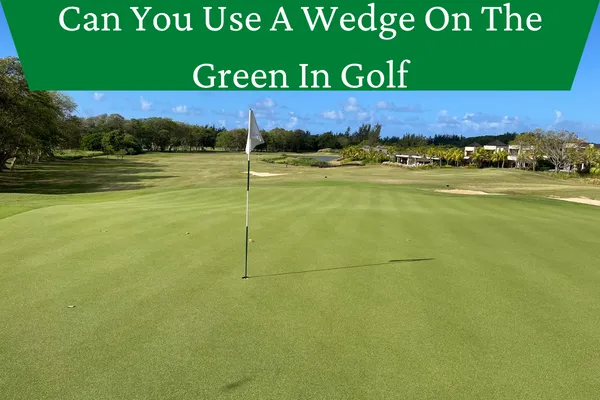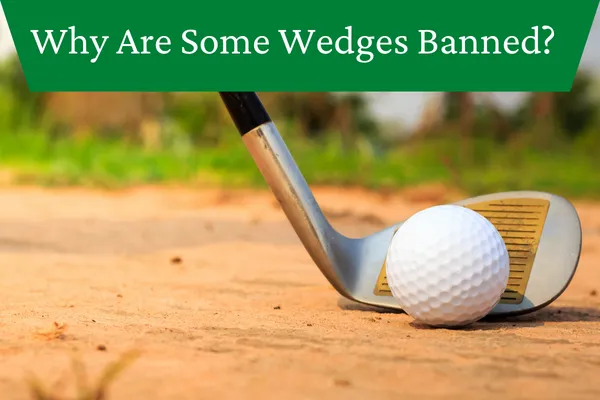Golf Wedge Lofts Explained
How many wedges should you carry? What lofts should they be? These are just some of the questions that you might have when deciding the make-up of your set of golf clubs. I’ll try to answer the typical questions that golfers might have when they first take up the game.
What Is A Golf Wedge?
A golf wedge is a type of golf club that features the most loft of any club in your golf bag. They are designed to hit the ball high in the air and relatively short distances compared with your other clubs. Most players will also use them for pitching and chipping to the green especially when they need some loft to clear rough grass or a hazard.
What Is The Loft Of A Golf Club?
The loft of a club is the angle between the clubface and the shaft. As the angle increases the club is described as being more lofted. A seven-iron has more loft than a five-iron. Wedges have more loft than a seven iron.
Chart Of Golf Wedges And Their Lofts
Golf manufacturers will produce sets of irons to their own loft specifications since there aren’t any written standards for them to follow. This means that one company’s five-iron might have the same loft as another company’s six-iron.
An easy marketing ploy to sell you a new club is to tell you that it goes farther than last year’s model. In order to achieve this the lofts on irons have gradually been lowered over the years. While the SW loft remained at 56° for the most part the other clubs in the set were produced with lower loft.
This meant that a PW might be 8-10° stronger than the matching SW. This meant for most golfers about a 20 to 25-yard gap when hitting full shots with these clubs. Thus was born the gap wedge. Literally to fill the gap left by the decreasing lofts on other irons. You can see this in the chart below. I have used the lofts from the Cobra LTDx irons for the 2020s. The PW in this set has a loft angle somewhere between a traditional seven or eight-iron! Not really surprising then that you would hit this club further than the pitching wedge of a set from 30 years ago.
Insert table here
How Many Wedges Should You Have in Your Bag?
As a golfer, it is important to have the right number of wedges in your bag. As a beginner, I would suggest sticking with a pitching wedge and sand wedge. Until you get more familiar with the game and how far you are hitting the ball I don’t think there’s any need to overcomplicate things by buying specialty wedges. Even more so given the exorbitant cost that the manufacturers of these clubs now demand.
More experienced or mid-handicap golfers would probably look to add at least one wedge to their lineup. Depending on the type of golf courses you play and your swing you might be better off going for a lob wedge or a gap wedge.
The most skilled golfers with handicaps below 10 will most likely opt for a four wedge setup comprising of:
- pitching wedge
- gap wedge
- sand wedge
- lob wedge
This would give them the best coverage of yardages and a number of different options for short-game shots.
Traditionally golf clubs had four degrees of loft difference between each club but these days you can see sets with 5°-6° gaps at the shorter end.
Ultimately comes down to having comfortable distances between each club. The last thing an amateur golfer needs is to be trying to hit too many partial shots. They would usually be much better off hitting a full shot with a club that they know should go a specific distance.
What Are The Different Golf Wedges Called?
Pitching Wedge
Typically a modern pitching wedge would have 46°-48° of loft although there are some sets out there where the pitching wedge loft is as low as 41°! Depending on your clubhead speed you will probably use a pitching wedge to play approach shots from 90 to 150 yards. Many golfers will also use this club to play shorter pitches and chips to the green where they need to get the ball in the air.
Gap Wedge
A gap wedge is a type of golf club used for shots that are a little shorter than your wedge. It would usually have a loft between a pitching wedge and a sand wedge, making it ideal for shots that require accuracy. It is also a versatile club as you can use it for chip and pitch shots around the green. The difference in loft between your pitching wedge and your sand wedge is typically around 8-10 degrees, so if you decide to purchase a gap wedge then you will want to get one that falls in the middle at around 50-52 degrees.
Some manufacturers label their gap wedge as AW for approach wedge. This lofted wedge only exists because of the gap between your pitching wedge and sand wedge that was created by strengthening the loft of all the irons except the sand wedge.
Sand Wedge
A sand wedge, also known as an SW or sand iron, is a type of golf club used by golfers to hit shots primarily from sand bunkers. It has a higher loft and more bounce than most other wedges, making it ideal for hitting shots out of the sand. It is designed with a wide sole, which allows the club head to slide through the sand without digging too deep.
The golfer can also use the club to hit high lob shots over obstacles such as trees or water hazards. Sand wedges are essential for any golfer looking to improve their game and could be the difference between getting out or being left in a bunker.
You will still usually find them with around 56° of loft although some wedge sets might have them as low as 54°.
Lob Wedge
A lob wedge is a golf club that is designed to help players get the ball up in the air quickly to clear an obstacle. It has more loft than any other type of wedge, usually between 58°- 64°. Sometimes called a utility wedge or just U.
The higher loft makes it easier to get the ball up quickly and also means it should stop more quickly. This makes it ideal where you need to chip over a bunker or if you have short-sided yourself in some rough. It can also be quite useful if the greens are very firm as the extra height should help the ball come to a halt more quickly.
The one caveat is that it can become difficult to judge distances with a lob wedge so you need to think hard on whether your game is technically able to handle the club. For most amateur golfers it’s probably best to avoid clubs with more than 60 degrees of loft.
With a high bounce wedge the leading edge of the club will sit some way off the ground at address, while a low bounce wedge will have a leading-edge much closer to the ground.
Wedge Options
Aside from the loft, there are two other factors when purchasing this particular piece of golf equipment.
Bounce
Bounce is an important factor to consider when selecting golf wedges. The bounce angle refers to the angle on the sole of the club that helps a golfer determine how the club will interact with the ground. A high-bounce wedge will be better suited to lush conditions while a low-bounce wedge will be better suited to firm conditions.
For example, if your regular course has very little sand in the bunkers then you might need to look at getting a low-bounce wedge there isn’t a lot of sand for you to glide through. On the other hand, if there tends to be plenty of sand in the bunkers then you might want a sand wedge with more bounce.
Sole Grind
As players look for more and more customization options manufacturers have started offering different grinds on some of their wedges. The grind repairs to air the sole of the wedge has been shaped. Different types of grind will suit different playing conditions or particular types of shot.
Vokey wedges in particular offer multiple baits and grind options to suit pretty much every situation.
Golf Wedge Lofts Explained: Summary
To round up, if you are a beginner or high handicapper you are probably going to be better off sticking with just two wedges to begin with maybe adding a gap wedge to cover the large yardage gap between sand wedge and pitching wedge.
More experienced players will probably want to add a lob wedge to give them some different options.

